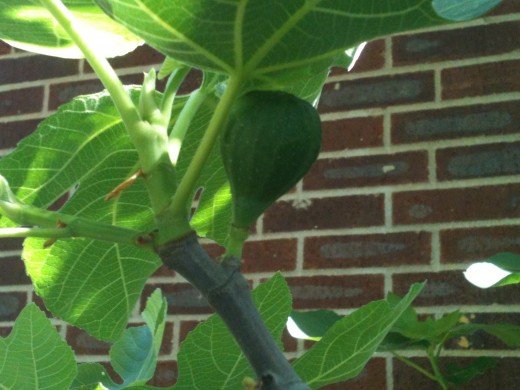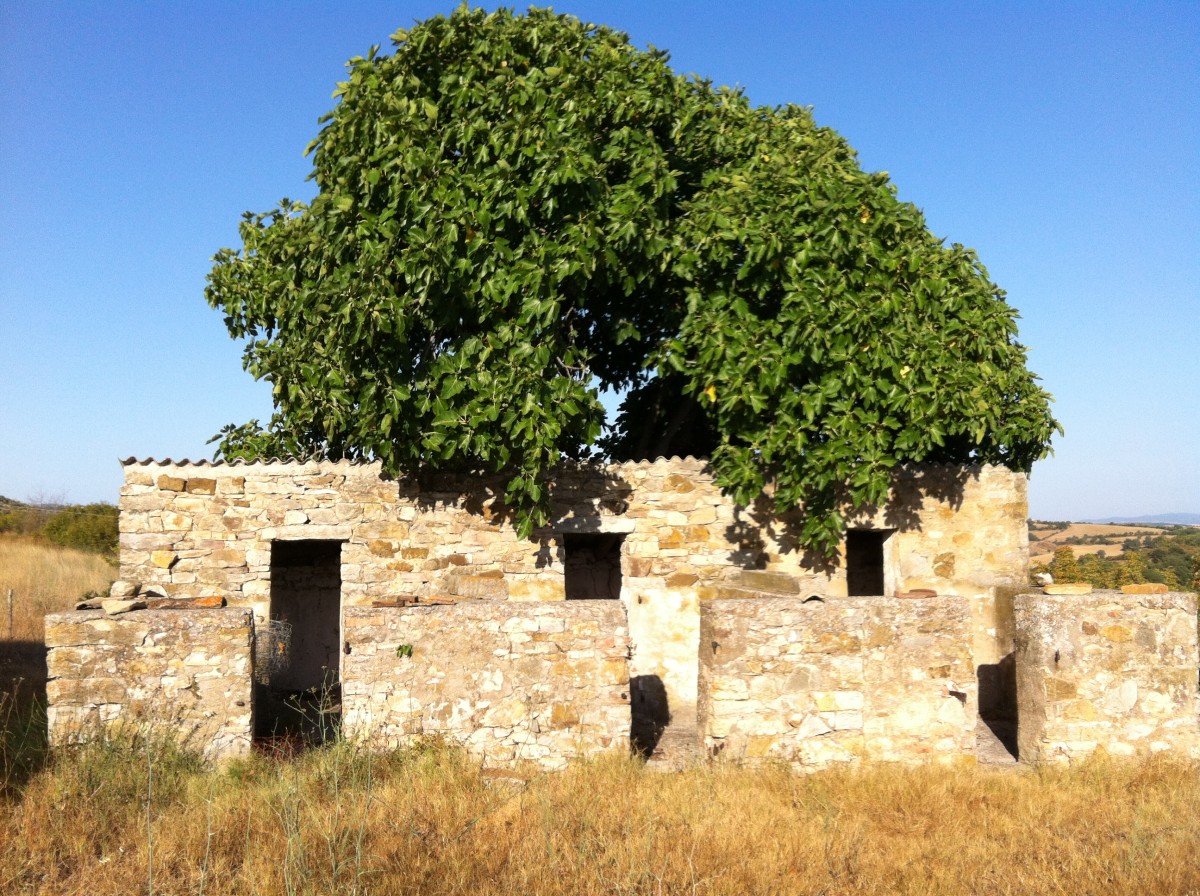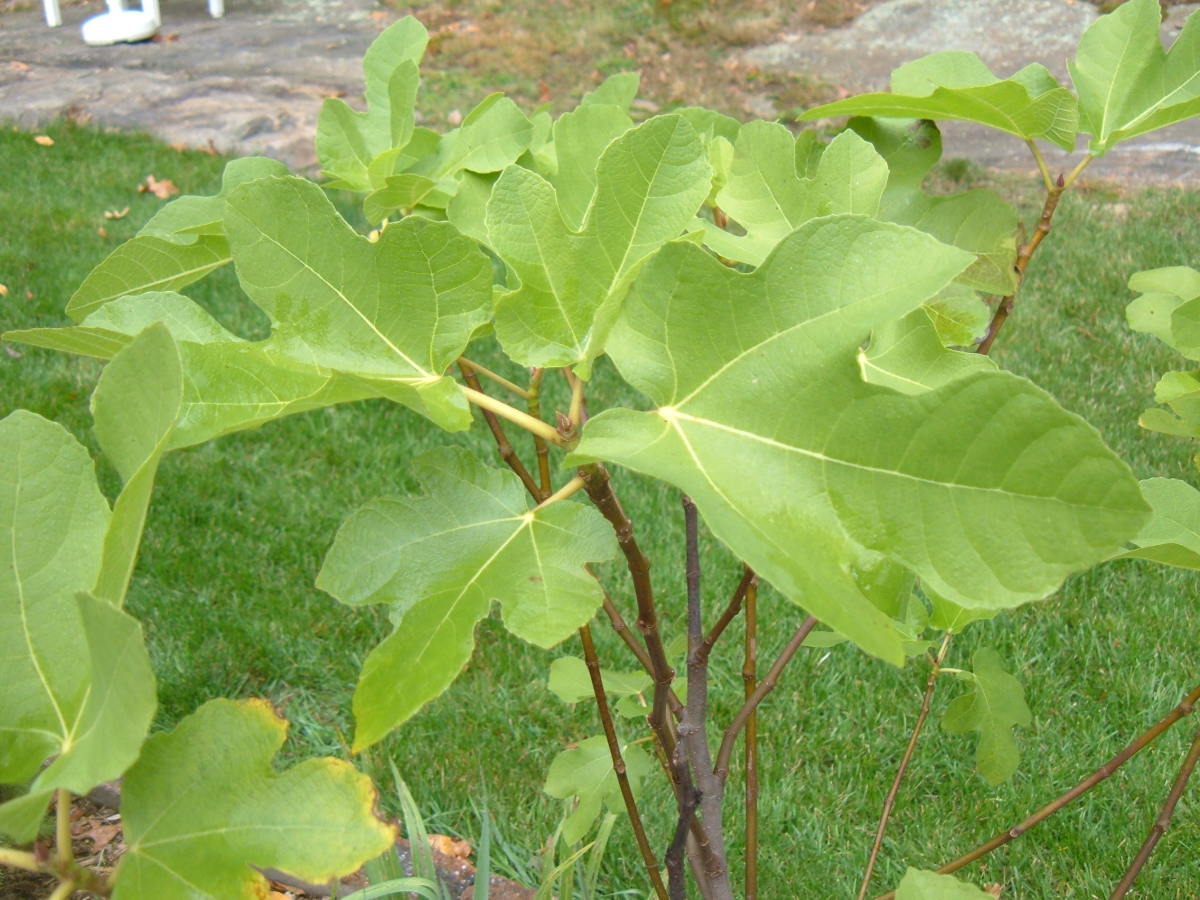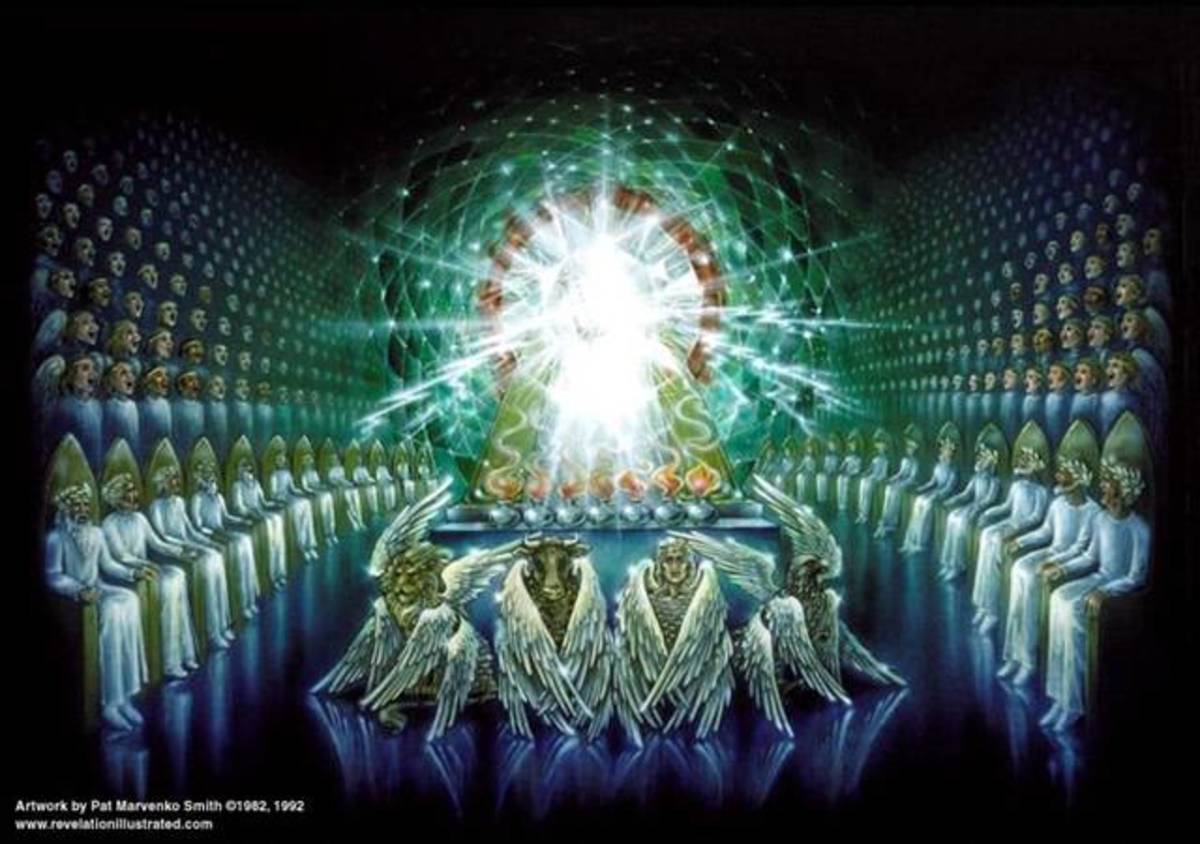Jesus and the Fig Tree

Jesus and the Fig Tree
Jesus and the Fig Tree or
Blessing and Cursing
Did Jesus Really Curse the Fig Tree?
Roy Blizzard III © 2012
In two places in the Gospel records, Matthew 21:18-22 and Mark 11:12-25, we read a story where Jesus seems to inexplicably “curse” a fig tree. Unfortunately, this is a very complicated story and there are many aspects about this story that are difficult for the average person to understand and because of this difficulty these passages have been misinterpreted, mistranslated and many conclusions have been “jumped to” regarding this incident that are quite misdirected and they demonstrate an amazing lack of understanding of what was involved in this episode that took place near the end of Jesus’ ministry.
The story of Jesus and the fig tree, found in the gospels of Matthew and Mark, has bothered people for many years. Even though one may read many explanations and commentaries, none are really satisfactory as there is no real understanding of the subject.
William Barclay, the famous Theologian and Minister stated: “This story is, without exception, the most difficult one in the gospels.”
Erroneous conclusions reached after reading these passages seem to stem from readers concentration, as usual, on the wrong points of the story such as, Did Jesus have a right to “curse” a tree? What is the meaning of “curse”? Since the tree was apparently destroyed, did he destroy property that did not belong to him? Why did Jesus apparently curse a tree just because it had no fruit when it was not supposed to have any? Why don’t we have more faith?
Most modern Christians concentrate on the withering of the Fig Tree, i.e. the retribution aspect and they interpret the parable by suggesting that the tree's withering meant the Sadducee’s and Pharisee’s teachings (read all of Judaism here by Christians) were far from the truth, they were in error, and that their erroneous teachings were the source of Jesus' anger at the lack of fruit; and at some future time the “fruits of Jesus’ Christianity” would come forth and then an eschatological kingdom of God arrives. They are wrong again.
Some atheists and skeptics think this story shows that Jesus made mistakes just like everyone else; however, Jesus’ actions have nothing to do with a mistake, but his actions again are based upon normative Judaism of Jesus’ day. So they are wrong as well.
It again all has to do with purpose, Jesus’ purpose, the Jewish leader’s purpose, the tree’s purpose and ultimately, our purpose!
Here are the passages in question:
Matthew 21:18-22 - KJV
18) Now in the morning as he returned into the city, he hungered.
19) And when he saw a fig tree in the way, he came to it, and found nothing thereon, but leaves only, and said unto it; “Let no fruit grow on thee henceforward for ever”. And presently the fig tree withered away.
20) And when the disciples saw it, they marveled, saying, “How soon is the fig tree withered away!”
21) Jesus answered and said unto them, “Verily I say unto you, If ye have faith, and doubt not, ye shall not only do this which is done to the fig tree, but also if ye shall say unto this mountain, Be thou removed, and be thou cast into the sea; it shall be done.
22) And all things, whatsoever ye shall ask in prayer, believing, ye shall receive.”
Mark 11:12-26 - KJV
12) And on the morrow, when they were come from Bethany, he was hungry:
13) And seeing a fig tree afar off having leaves, he came, if haply he might find any thing thereon: and when he came to it, he found nothing but leaves; for the time of figs was not yet.
14) And Jesus answered and said unto it, “No man eat fruit of thee hereafter for ever. And his disciples heard it.”
15) And they come to Jerusalem: and Jesus went into the temple, and began to cast out them that sold and bought in the temple, and overthrew the tables of the moneychangers, and the seats of them that sold doves;
16) And would not suffer that any man should carry any vessel through the temple.
17) And he taught, saying unto them, “Is it not written, “My house shall be called of all nations the house of prayer?” but ye have made it a den of thieves.”
18) And the scribes and chief priests heard it, and sought how they might destroy him: for they feared him, because all the people were astonished at his doctrine.
19) And when even was come, he went out of the city.
20) And in the morning, as they passed by, they saw the fig tree dried up from the roots.
21) And Peter calling to remembrance saith unto him, “Master, behold, the fig tree which thou cursed is withered away.”
22) And Jesus answering saith unto them, “Have faith in God.”
23) For verily I say unto you, “That whosoever shall say unto this mountain, Be thou removed, and be thou cast into the sea; and shall not doubt in his heart, but shall believe that those things which he saith shall come to pass; he shall have whatsoever he saith.”
24) “Therefore I say unto you, What things soever ye desire, when ye pray, believe that ye receive them, and ye shall have them.”
25) “And when ye stand praying, forgive, if ye have ought against any: that your Father also which is in heaven may forgive you your trespasses.”
26) “But if ye do not forgive, neither will your Father which is in heaven forgive your trespasses.”
In this story, the way it appears to be related to us in the English is as follows; Jesus and some of his students are leaving Bethany when Jesus strolls up to someone’s fig tree close to the side of the road to steal fruit from it. For some unknown reason He doesn’t realize it has no fruit on it even though it is out of season, so he is angry at this poor tree and curses it so it will die and so He tells us if we just had enough faith we could do the same. This is what people think this story says.
Now, ask yourself the following as the atheists have already done:
1) If it wasn't fig season, why would even a moron look for figs?
2) Is killing a tree for not bearing fruit out of season a reasonable response by any standard?
Is this thinking is totally wrong? Let’s look and see.
In perusing the text in Hebrew there is one difference between Mark and Matthew that we need to address first, and in my opinion it has been an error by the English translators; reading in Mark, Simon Peter notices that the fig tree has withered the next day, but in Matthew, the fig tree withers immediately and is noticed at that time by unnamed disciples. However the Hebrew word Pitom - פתאםtranslated as “suddenly” can mean “unawares” or “by surprise” and the time period in which the disciples see the withered fig tree isn’t specified by an adverbial time marker of any sort. It simply says “When they saw it” it doesn’t say “and they saw it wither and die at that instant”. If you read the Hebrew then there is no conflict in the two stories at all. Of course either way, instantly or over a day or two, for a Fig Tree to wither is very unusual as they are excellent at eking out a living and producing fruit in marginal soils. So, what gives?
To properly understand this passage let’s re-start at the beginning and arm ourselves with the keys to understanding this story. The first thing we have to know is something about figs since the story obviously revolves around a Fig Tree, so what kind of figs are we speaking about? There are four types of figs: the “Smyrna” fig, the “Capri” fig, the “San Pedro” fig, and the common fig. The fig in question is probably a common fig which is very popular in all the regions of Israel.
The origin of the common edible fig is the Mediterranean area and is one of the first plants that were cultivated by humans. Nine sub-fossil figs of a parthenogenic type dating to about 9400–9200 BC were found in the early Neolithic village Gilgal I, (remember this town name) in the Jordan Valley, 13 km north of Jericho. The find predates the domestication of wheat, rye, barley, and legumes by nearly one thousand years, and may thus be the first known instance of agriculture.
Since the story indicates it was also the Passover season, it would have been sometime in mid to late April, and the time for the fig crop had not arrived, which would have been several months later. Hence, when Jesus approaches a seemingly barren fig tree looking for figs, what did He know that we don’t? Did He think that just because it wasn’t the season for figs in Israel that God was going to create and hide some big, juicy, miracle figs there just for Him?
There are two items of interest in the story which indicate the truth we are after. One, Jesus was evidently searching into the leaves of the Fig Tree for what he couldn’t see from afar. Many figs are green when ripe so it would have made it very difficult to determine if there were figs upon the tree. Two, the date being sometime in April, indicates he was searching for “Early Fruit” or the First Fruits of the fig tree called Brebas.
Some varieties of the common fig are capable of producing figs early. You have to be a detective to spot these few early figs, especially if the figs are white (i.e. green in color when ripe). These early figs are called “breba”. All Brebas are figs, but not all figs are Brebas. The first fig crop, which form on the previous year’s wood, is called Breba and are never pollinated and are usually larger in size than the main crop fruit, but fewer in number. The second crop is usually called "main", and is produced on THIS year’s new growth. Some figs even have a third crop, but it is rare to have them ripen on all but a few specific trees.
These “breba” figs come below the new leaves. One can actually see the “breba” figs even in the previous winter if you know where to look. Not all the Breba figs will ripen so early in the season one might find 20 breba figs but most of them will abort and drop off, but the main crop that will start from February on is huge. One of the amazing things about figs is that behind every leaf you will find a fig or two. So where you would expect to get around 500 figs from the main crop, you may only get a handful of “breba” if you are lucky.
There is a very simple trick to know if the fruit you are looking at is a Breba or a fig. A Breba fig grows below leaves (normal as it is on a previous year’s branch), while a regular fig grows above the leaves (normal as it is on this year growth). This explains Jesus looking closely at the tree trying to find what He was not able to see at a distance.
While the “season” of the full fruiting of the figs was still afar off – around July or later, Brebas sprout out before the leafing out of the tree in the spring and then ripen early and sporadic underneath the leaves. But, just because a “common” fig tree had leaves did not mean it had a Breba crop. The expression “if haply he might find anything thereon”, found in Mark’s account, points to the high odds against finding figs on the tree.
However, if one fig tree in the area had Brebas then there was a good chance that all the others may have had them if they were the same variety. Therefore, Jesus would have expected this particular tree to have early figs if he had seen or eaten some off of other trees. So, finding none, where some were expected, brings a “curse” from Jesus, or does it?
Jesus was looking for some “breba” figs. If he was looking for the main crop Mark would not have said “if haply he might find anything thereon”, he would have said, “and he saw a sea of figs” due to the massive quantities of the main crop. The tree in this story was probably a self-sown volunteer from a seed in the droppings of a bird which had eaten a fig. When a fig tree grows from a seed, just like the olive, the resultant tree is not “true to type”, and the quality of its fruit is potluck and usually the quality or the quantity of the fruit is poor. The other consideration is that the plant had a “varietal trait” that did not produce in that area but may have produced in some other soil or region. So therefore it was a waste of space here and needed to be replaced with a new variety.
According to the text, the tree that Jesus saw had nothing, no main crop was mentioned, but only leaves. What was odd for Jesus is that there was not even a main crop which by that time should have been obvious. By the time of the “breba” crop, the size of the main crop figs should be from 4 cm in diameter to a pea size further up in the branch, and one should be able to see between 5 to12 figs of the main crop on that branch. It is very disheartening to stand in front of the “straight forward fruit tree” with more than 500 leaves, and see not one fig. Jesus couldn’t believe his eyes. The tree Jesus saw was a waste of space and waste of people’s time. It is disappointing to expect fruit from a fruit tree, but find none
If the text just didn’t mention a main crop as it was dealing with the first fruits, this too would be bad news on another vein. If perchance the fig tree had a main crop of small immature figs still upon the tree and they were not yet gathered as the “season of harvest” wasn’t yet here, and remembering that a new shoot (green) can carry up to 24 figs thus enabling the main harvest to potentially have been huge, this immature crop would have been destroyed with the tree, then this puts the story in context with the other fig stories of the coming of the Messiah where those who don’t accept him will be cut off..
This then brings us to another fig parable that Jesus taught in (Luke 13:6-9)
He also spoke this parable: "A certain man had a fig tree planted in his vineyard, and he came seeking fruit on it and found none. Then he said to the keeper of his vineyard, 'Look, for three years I have come seeking fruit on this fig tree and find none. Cut it down; why does it use up the ground?' "But he answered and said to him, 'Sir, let it alone this year also, until I dig around it and fertilize it. And if it bears fruit, well. But if not, after that you can cut it down."
Fig trees indeed are a straight forward fruit tree. You plant this year; next year you will eat from it. Sometimes if you plant in early spring you will eat from it the same year. The above parable actually points to the patience of God in leaving a fig tree for three years.
So now that we know this story centers around an expected first fruit, what happens when Jesus finds none?
Jesus “cursed” this tree. He had expected that it should have been producing early fruit as were other trees obviously, as it was the season for them to be doing so. Thus, if it were not producing first fruit, it was not fulfilling its purpose and Jesus knew it was an unproductive tree and as such should be cut down and another put in its place that could produce sustenance for those who were hungry and in need, but did what he say constitute a “curse”?
Could Jesus be referring to something in Jewish writings that correspond to this first fruit or a lack thereof? Well, yes he is, but I guess none of the translators or mis-interpreters ever bothered to look.
An ancient Baraita – basically a commentary in Aramaic ברייתא: “the external” or “the outside” designates a tradition in the Jewish Oral Law not incorporated in the Mishnah. Thus "Baraita" refers to teachings "outside" of the six orders of the Mishnah. In later collections, individual Baraitot – plural - are often authored by sages of the Mishnah – the Tannaim - think just after Hillel and Shammai about 0 AD - who were all contemporaries of Jesus). Tannaim - the root tanna (תנא) is the Talmudic Aramaic equivalent for the Hebrew root shanah (שנה), which also is the root-word of Mishnah and literally means "to repeat (what one was taught)" and is used to mean "to learn".
This particular Baraita handed down in different versions enumerates six or seven persons or things created before the world came into existence: (1) the Torah, which is called “the firstling of His way” (Proverbs viii. 22, Hebrew); (2) the throne of glory, which is “established of old” (Psalms xciii.2); (3) the sanctuary – “From the beginning is the place of our sanctuary” (Jeremiah xvii. 12); (4) the Patriarchs – “I saw your fathers as the first ripe in the Fig tree at her first time” (Hosea ix. 10); (5) Israel – “Thy congregation, which thou hast created from the beginning” (Psalms lxxiv. 2, Hebrew); (6) The Messiah – “Before the sun his name sprouts forth as Yinnon, “The Awakener” (Psalms lxxii. 17, rabbinical interpretation); also, “His issue is from the beginning” (Micah verse 1; Pirke Rabbi Eliezar iii,); (7) repentance – “before the mountains were brought forth, or even thou hadst formed the earth and the world,” Thou sadist, “Return [to God} ye children of men” (Psalms xc,2-3).
It is my opinion that this parable of Jesus is in fact the earliest Jewish reference to this early teaching of the Tannaim based upon Hosea 9, (See especially verses 10 and 16), and marks Jesus as a teacher as one of the Tannaim.
Hosea 9 – King James Version
1) Rejoice not, O Israel, for joy, as other people: for thou hast gone a whoring from thy God, thou hast loved a reward upon every corn floor.
2) The floor and the winepress shall not feed them, and the new wine shall fail in her.
3) They shall not dwell in the LORD's land; but Ephraim shall return to Egypt, and they shall eat unclean things in Assyria.
4) They shall not offer wine offerings to the LORD, neither shall they be pleasing unto him: their sacrifices shall be unto them as the bread of mourners; all that eat thereof shall be polluted: for their bread for their soul shall not come into the house of the LORD.
5) What will ye do in the solemn day, and in the day of the feast of the LORD?
6) For, lo, they are gone because of destruction: Egypt shall gather them up, Memphis shall bury them: the pleasant places for their silver, nettles shall possess them: thorns shall be in their tabernacles.
7) The days of visitation are come, the days of recompense are come; Israel shall know it: the prophet is a fool, the spiritual man is mad, for the multitude of thine iniquity, and the great hatred.
8) The watchman of Ephraim was with my God: but the prophet is a snare of a fowler in all his ways, and hatred in the house of his God.
9) They have deeply corrupted themselves, as in the days of Gibeah: therefore he will remember their iniquity, he will visit their sins.
10) I found Israel like grapes in the wilderness; I saw your fathers as the first ripe in the fig tree at her first time: but they went to Baalpeor, and separated themselves unto that shame; and their abominations were according as they loved.
11) As for Ephraim, their glory shall fly away like a bird, from the birth, and from the womb, and from the conception.
12) Though they bring up their children, yet will I bereave them, that there shall not be a man left: yea, woe also to them when I depart from them!
13) Ephraim, as I saw Tyrus (Tyre), is planted in a pleasant place: but Ephraim shall bring forth his children to the murderer.
14) Give them, O LORD: what wilt thou give? Give them a miscarrying womb and dry breasts.
15) All their wickedness is in Gilgal: for there I hated them: for the wickedness of their doings I will drive them out of mine house, I will love them no more: all their princes are revolters.
16) Ephraim is smitten, their root is dried up, they shall bear no fruit: yea, though they bring forth, yet will I slay even the beloved fruit of their womb.
17) My God will cast them away, because they did not hearken unto him: and they shall be wanderers among the nations.
The text of the Bible argues that the name Ephraim the Son of Joseph - means double fruitfulness and has the rights of the firstborn. The name is connected with the root פרה- fruit, so then we can expect that it also means both physical and spiritual fruitfulness of the offspring. Therefore we expect to see a lack of spiritual fruit in these individuals that would lead them to not recognize a messianic figure, and due to this spiritual deadness, they lose their rights as the firstborn of the messiah and their roots are dried up.
The town Bethphage, the name idiomatically meaning "House of Unripe Figs", was often mentioned in the Scriptures. Understanding the meaning of Bethphage is one key to understanding the importance of this passage. Bethphage was understood to be the city where the Kohanim (Priests) lived, who took care of the "clean place" on the top of the Mount of Olives. They lived in this city because if the figs were unripe then there was no chance of repeating Adam's sin or the sin at Baal Peor. The name was used to picture righteousness in Judaism.
Another city closely associated with Bethphage and the priests was a city was also called after the fig and that was Bethany. There is considerable confusion of the etymology of Bethany. While some say Aramaic: עניאבית, Beth Anya, “house of the poor” others say in Hebrew Beit Hini בית היני or תאנהבית - “house of measure” or “house of the figs”, but it idiomatically seems to have meant to the Jewish Priests house of the Ripe Figs as opposed to Bethpage which idiomatically to them meant House of the unripe figs but there also seems to be a sense in which Jesus “measures” the Jewish leaders at the cursing of the Fig Tree. But there was also a sense in which it meant house of the poor, as in affliction, as Bethany seems to have been the designated place for the care of the ill. In our case however, the story in Matthew and Mark revolves around Bethany because of its association with ripe figs and Jesus’ expectation to find figs there.
This story also holds a parallel to the story about the prophet Balaam and the Baal-Peor in the Old Testament. The prophet Balaam ascends the mountain of Pe‘or, and makes sacrifices to his god – Baal - from atop it. After finishing his sacrifices, Balaam views the Israelites upon the plain below, and although hired to curse them, he pronounces a blessing over them, prophesying their blessed nature and destruction of Moab.
In the Bible, the Israelites, after spending a short time in the plain of Moab, begin to involve themselves with the Moabite women and the Moabite culture. Consequently, the Israelites begin whoring after the Moabite gods, and specifically to Baal Peor (Hebrew פעור בעלBa‘al Pə‘ôr), in the Septuagint Beelphegôr. This Baal is often associated with Mount Pe‘or, with Pe’or meaning “an opening”, so this would mean “The God of the Opening” meaning the rectum and its associated foul pagan practices.
But here also there is a good possibility it could be a reference to Shamash the Semitic Sun god due to the fact that the leaders in Judaism were promulgating many teachings out of Babylonian Judaism and that the region of Babylon was the center for Shamash worship. He is worshipped as the God of Justice and Light and His wife was the whore Aya / Ishtar –goddess of sexual love. A close parallel to what we read in Hosea.
In any case, YHWH orders Moses to gather the chiefs of the people and hang up the idolaters before Yahweh to turn away Yahweh's anger. The scene then abruptly shifts from concerns about Moabites to those about Midianites and an Israelite man, Zimri, the son of Salu who brings a Midianite woman into the camp in the sight of Moses, where the people are weeping due to the deaths from the plague.
Phinehas, grandson of Aaron (and the poster child for the zealousness of the Pharisees i.e. Saul / Paul) thereupon rises up with a spear, follows Zimri into the chamber and thrusts the spear through both the man and woman, who were evidently in the act of copulation. The plague, from which 24,000 had died, then ceased to take life.
In the story in Matthew and Mark, we see Jesus evoking the zealousness of Phineas (as many Pharisees did) during this story as the incident with the tree occurs in Mark immediately before and then after Jesus' conflict with the Temple money changers where Jesus demonstrates His zealousness for YHWH and His desire for the atonement of the Children of Israel.
Jesus then does just the opposite of Balaam and indicts the leaders of the Israel who He views as not properly guiding the flock of YHWH and who are causing the Israelites to rebel and whore after other Gods and leading the people into destruction as did Achon at Gilgal (where have we seen this word before).
Here in Micah 7 we read an interesting passage that relates to the first fruit;
1) Woe is me! For I am as when they have gathered the summer fruits, as the grape gleanings of the vintage: there is no cluster to eat: my soul desired the first ripe fruit.
2) The good man is perished out of the earth: and there is none upright among men: they all lie in wait for blood; they hunt every man his brother with a net.
Jesus also seems to be using the fig tree as a metaphor for what he sees as the Jewish Leaders whoring after Mammon with their teachings and precepts. As Jesus hoped to find a first fruit on the fig tree, Jesus hoped the Jewish leaders would search for and find a first fruit of God, at the Temple, since the fig tree in Judaism represents the coming of the Messiah.
The “cursing” of the tree therefore would then represent the withering of the roots of the false Messianic teachings of who the Jewish leaders believed the Messiah to be. We have to remember, the Brebas are on two year old wood, wood that is established and nurtured by the tree and should be bearing fruit, but if the root of a tree is rotten then it will produce no fruit!
What fruit was it that the Jewish leaders were lacking in their day? They were lacking the “spirit” of life within their hearts. They had many sacrifices and ceremonies, but were lacking in the spirit and the life imbedded within them that the sacrifices and ceremonies were pointing towards. They were caught up in the worship of power and worship of a religion not YHWH, therefore their “root” had become corrupted and they weren’t capable of nourishing fruit. If we don’t produce fruit when called to are we “cursed” by God?
This cursing of the fig tree was probably originally paired with the following story found in the Synoptic Gospels within a parable during the Olivet discourse. In Matthew 24, Jesus says that when the fig tree (Messianic Fig Tree) puts forth leaves (after the First Fruit has set – the Messiah) one can tell that summer (the next harvest) has arrived. Jesus continues that when this (set of events) has happened the kingdom of God will be here.
This is almost always interpreted metaphorically, and is usually considered in contrast to the earlier tree withering, but they actually pair together quite well when we see the correct interpretation wherein both are indicating the Messiah.
The mainstream Christian view on Jesus' miracle of withering the fig tree has usually been that Jesus was teaching the disciples that although Israel was God's chosen people at one time (Israel was commonly represented by the fig tree) - if Israel or any other, claims to be of Jesus (or have spiritual life) yet do not keep his commandments (as Jesus says this is the sign of his followers)then they shall not have salvation which they interpret as “going to heaven”. This is not the proper way to understand this passage.
In Jeremiah2:21Israel is referred to as a choice vine planted by God which has turned against her creator to become a “corrupt wild vine”. The significance for us is that we also see it as not bearing fruit which means a branch or plant is spiritually dead and must be cut off. The fruit may be considered in a context of the Biblical definition of spiritual fruit as love, joy, peace, patience, kindness, goodness, faithfulness, gentleness, and self-control, but there is something more to this fruit, it must have a purpose for it to exist. As understood in Jesus’ teachings, to have such fruit we must be grafted into Christ, the true vine and be one with His and YHWH’s purpose.
To understand in context the “withering of the fig tree” it is important to realize that Jesus didn’t actually “curse” the fig tree as that was not needed here. The tree was created by YHWH so Jesus didn’t need to “pronounce a curse over it” even though this act of “cursing creation” was actually acceptable when done by God. What Jesus did was actually just pronounce that the fig tree was not being fruitful according to the will of YHWH in Genesis 1:12 “And the earth brought forth grass, and herb yielding seed after his kind, and the tree yielding fruit, whose seed was in itself, after his kind: and God saw that it was good.”
He thus revoked the blessings of God found in Deuteronomy 28:4 – “Blessed shall be the fruit of thy body, and the fruit of thy ground, and the fruit of thy cattle, the increase of thy kine, and the flocks of thy sheep”, and needs not evoke Deuteronomy 28:15-18. The disciples could not imagine why that fig-tree should so soon wither away; but they didn’t comprehend the power of the spirit of YHWH within all creation. Without the life giving words of the living Torah, creation ceases to exist. Therefore when the blessings of YHWH were revoked, the tree had no choice but to wither from the root.
The failure of the Fig to fulfill its purpose evoked the wrath of Jesus and provides a telling example to us of the failure to fulfill our purpose, if the church would ever tell us what that is. The first fruits of Judaism – the Patriarchs who all recognized the Messiah and walked in intimacy with YHWH were not being followed by example any longer within their intimate role with YHWH. The withering of the Jewish leader’s teachings and authority due to their lack of true faith and intimacy with YHWH was demonstrated for Jesus’ students by the root withering of the fig tree.
The Lord of the Fig Tree knows when the fruits thereof are ripe; so God knows when it is time to call the righteous away from this world. (Babylonian Talmud)
Jeremiah 24 has some very good insight for us also.
1) The LORD shewed me, and, behold, two baskets of figs were set before the temple of the LORD, after that Nebuchadrezzar king of Babylon had carried away captive Jeconiah the son of Jehoiakim king of Judah, and the princes of Judah, with the carpenters and smiths, from Jerusalem, and had brought them to Babylon.
2) One basket had very good figs, even like the figs that are first ripe: and the other basket had very naughty figs (actually very bad figs not naughty), which could not be eaten, they were so bad.
3) Then said the LORD unto me, What seest thou, Jeremiah? And I said, Figs; the good figs, very good; and the evil (bad), very evil (bad), that cannot be eaten, they are so evil (bad).
4) Again the word of the LORD came unto me, saying,
5) Thus saith the LORD, the God of Israel; Like these good figs, so will I acknowledge them that are carried away captive of Judah, whom I have sent out of this place into the land of the Chaldeans for their good.
6) For I will set mine eyes upon them for good, and I will bring them again to this land: and I will build them, and not pull them down; and I will plant them, and not pluck them up.
7) And I will give them an heart to know me, that I am the LORD: and they shall be my people, and I will be their God: for they shall return unto me with their whole heart.
8) And as the evil (bad) figs, which cannot be eaten, they are so evil (bad); surely thus saith the LORD, So will I give Zedekiah the king of Judah, and his princes, and the residue of Jerusalem, that remain in this land, and them that dwell in the land of Egypt:
9) And I will deliver them to be removed into all the kingdoms of the earth for their hurt, to be a reproach and a proverb, a taunt and a curse, in all places whither I shall drive them.
10) And I will send the sword, the famine, and the pestilence, among them, till they be consumed from off the land that I gave unto them and to their fathers.
The image of the fig tree for the leaders of the community today should raise questions for readers concerning the ways in which we as believers in YHWH must seek out our purpose and unify with YHWH and Jesus in their purposes so that we may prosper and flourish in this world and produce the fruit we are expected to produce so that we are not allowed to wither with no fruit unto destruction.
The purpose of the believing community is to bring life to those in need and thereby bear fruit that blesses the world, but we have to understand Who we are created to be and with what purpose and what covenant we will follow to enable us to achieve that purpose. Until the day of Pentecost the disciples had no clue at all as it took a unifying spiritual action to understand it.
The Torah prohibits cursing a fellow believer. The root of this prohibition is to avoid causing injury with the power YHWH put into our mouths. Unless one is spiritually in tune with YHWH in purpose, we have no ability to know exactly how a curse will affect another person or thing or how much power we personally have in uttering a curse. However, even a simple person can bring suffering and pain through a curse, but even more so can we bring life through a blessing.
So in conclusion this story of the fig tree is a powerful demonstration that indeed Jesus was right when he spoke of the creative power to command a Mountain to be thrown into the sea. We have no understanding of the real power of our words as we have no real understanding of our purpose and no understanding of what faith we command. The real point of this story revolves around our created nature and the power for life and death we have in our words and deeds and the power given to us when we unify in totality with YHWH.
II Peter 1:16 “For we did not follow cleverly devised tales when we made known to you the power and coming of our Lord Jesus Christ, but we were eyewitnesses of His majesty.”
Psalms 119:21, Deuteronomy 28: 4, Malachi 2, Isaiah 42:15, Ezekiel 17
Some insights from other Jewish references:
Why is the Torah compared to the fig?
1) Unusual among fruit trees, the fig can produce fruit over a long season, from Shavuot to Sukkot (the main harvest from late May to early October).
a) You cannot pick all the figs at once, but only gradually, over a long season. Similarly, you cannot learn the whole Torah at once, but only gradually, little by little, over an entire lifetime. (Midrash Numbers Rabba 12,9; 21,15)
b) Whenever you go to the fig tree, you are likely to find ripe fruit to eat. Similarly, whenever you go to the Torah, you will find nourishment for the spirit. (Babylonian Talmud, Eruvin 54a, b)
2) Most fruits have inedible parts: dates have pits, grapes have seeds, pomegranates have skins. But every part of the fig can be eaten. Similarly, no part of the Torah is without value; all parts of it provide sustenance. (Midrash Yalkut Shimoni, Joshua 2)
Rabbi Chiya bar Abba said in the name of Rabbi Yochanan. What is the meaning of the verse, “He who tends a fig tree will enjoy its fruit…?” Why are the words of Torah compared to a fig? Just as a fig tree, as long as someone examines it, one will find figs, so too with the words of Torah, as long as someone meditates on them, one will find new insights. (Babylonian Talmud Eruvin 54a-b) (Evidently, Jesus feels the Jewish leaders have not been tending their figs.)
Shavu'ot, the Festival of Weeks, is the second of the three major Jewish festivals (the other two are Passover and Sukkot). Agriculturally, it commemorates the time when the first fruits were harvested and brought to the Temple, and is known as Hag ha-Bikkurim - the Festival of the First Fruits. The Hebrew word for first fruits is Bikkurim – בכורים which means literally “early figs”. This early fig called a Bikkura – בכורה. (Isaiah 28:4) ripen in early June, the third month of the Jewish calendar, which correspond to the festival of the first fruits. However, this does not mean a Breba fig which ripens even earlier and were really not considered a “crop” as they were not very numerous as a general rule. (Therefore the Prophets and the Messiah were not the Bikkurim, but the earliest Fruit, the Breba of God, the pre-harvest fruit which were few in number but larger and sweeter)
The Counting of the Omer reminds us of the important connection between Passover and Shavu'ot: Passover freed us physically from bondage, but the giving of the Torah on Shavu'ot redeemed us spiritually from our bondage to idolatry and immorality. Shavu'ot is also known as Pentecost, because it falls on the 50th day. Jacob, in Genesis 28, had his vision at the time of the First Fruits as well according to the Book of Jubilees 1:1-2. Historically, it celebrates the giving of the Torah at Mount Sinai, and is also known as Hag Matan Torateinu (the Festival of the Giving of Our Torah).

Roy BLizzard's new book on Amazon









